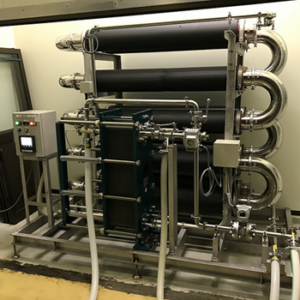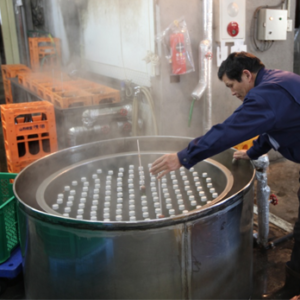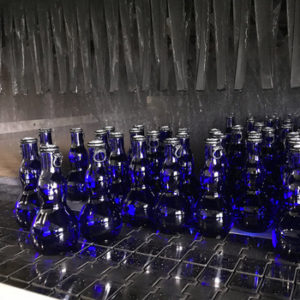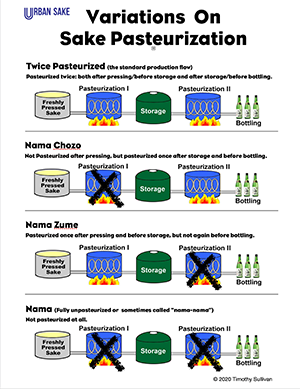Hi-ire literally means “put into the fire” but in the case of sake refers to sake pasteurization. This is the process of heating sake to roughly 144-154°F. The sake is then held at temperature for the required amount of time to make it “shelf stable” outside of refrigeration. That is achieved by using the heat to stop fermentation and kill any of the remaining bacteria or yeast and deactivating any enzymes in the sake. Pasteurization is usually done twice during the course of standard sake production – once before storage and once at the time of bottling. However, sometimes this pasteurization step is done just once, or not at all.
In-bottle pasteurization can be done by submerging bottles into a bath of hot water, or by moving bottles slowly along an enclosed conveyer, which then get sprayed with a hot water shower from above. Another pasteurization method uses a double pipe heat exchanger which is basically a pipe within a pipe. The sake runs through the inner tube while the outer pipe is filled with hot water. This transfers the heat from the water to the sake and holds the sake at the required high temperature long enough to pasteurize it.
Also See Related Terms:
• Namachozo
• Namazume
• Namazake






